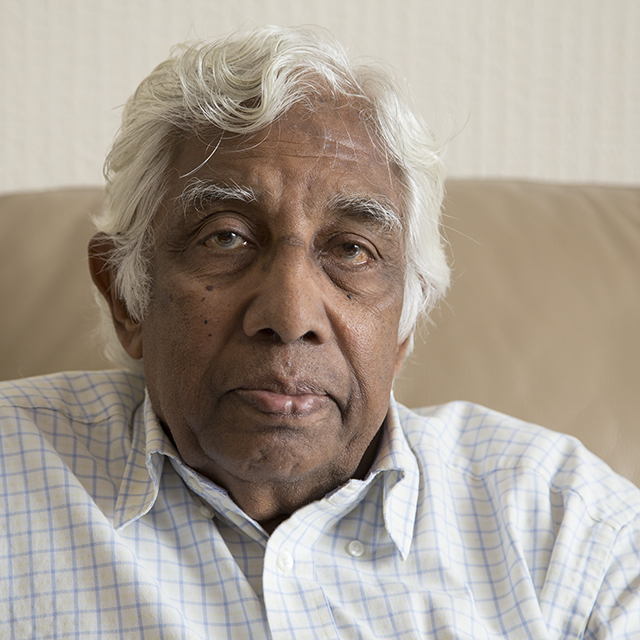Kidneys paved the way...
Mr. Ossie Fernando
Mr. Oswald Fernando
My name is Oswald Fernando, but everybody calls me Ossie Fernando, that’s been my name for a long time. I came here from Sri Lanka in 1963, coming to do my further surgical training, and then eventually ended up in the transplant unit in the Royal Free Hospital. It wasn’t called the transplant unit, because it was the urology department which was doing the kidney transplants, starting the kidney transplant programme. They had done three transplants in 1958: Roy Khan and Mr John Hopewell. But that wasn’t very successful, because there was no supporting dialysis programme. Eventually a dialysis programme was started and this was the thing that allowed us to do kidney transplants without taking risks with the patient’s life. Because if the kidney failed they could go back on dialysis. So the early transplants were very much a trial and error programme. But it grew from the early ones that we did where the immunosuppression was just azathioprine and lots of steroids to what we have today where we can regulate the immunosuppressants and get to transplant other organs apart from kidneys. But kidneys paved the way for other transplants.
We didn’t do any live donor transplants at the beginning – it was a cadaver programme that we started in 1968. And my job was to find the kidneys, with inverted commas. And I had to go around to the local hospitals, chat to the doctors involved in caring for patients that had been brought in after accidents, brain haemorrhages, and who had died suddenly. And I had to get there very fast, as fast as I could, to retrieve the organs, the kidneys at that time. And I always had an instrument tray in the boot of my car. I had to quickly get the ice into a picnic box – literally a picnic box – go there with this cold perfusing solution, take the kidneys out, perfuse them, and then we used to be able to get a blue light police car at that time, to take me there to the hospital, get the organs, come back, and the surgeon would be waiting ready to receive the kidney, and then go on with the transplant.
And right at the beginning we used both kidneys and then gradually we developed a sharing scheme with the London hospitals that were doing transplants – St Mary’s, The London Hospital, and Guy’s. A group started called the London Transplant Group, where we shared the kidneys in the London area, because at that time we weren’t aware how long we could store the kidneys, having perfused them. Eventually as time went on and we learnt that we could store the organs a bit longer once they’d been cooled and kept in ice, we started the sharing scheme called the UK Transplant Service, which was a sharing scheme for the whole country. And that has, of course, now expanded even more to sharing kidneys even with Europe.
We didn’t do any live donor transplants at the beginning – it was a cadaver programme that we started in 1968. And my job was to find the kidneys, with inverted commas. And I had to go around to the local hospitals, chat to the doctors involved in caring for patients that had been brought in after accidents, brain haemorrhages, and who had died suddenly. And I had to get there very fast, as fast as I could, to retrieve the organs, the kidneys at that time. And I always had an instrument tray in the boot of my car. I had to quickly get the ice into a picnic box – literally a picnic box – go there with this cold perfusing solution, take the kidneys out, perfuse them, and then we used to be able to get a blue light police car at that time, to take me there to the hospital, get the organs, come back, and the surgeon would be waiting ready to receive the kidney, and then go on with the transplant.
And right at the beginning we used both kidneys and then gradually we developed a sharing scheme with the London hospitals that were doing transplants – St Mary’s, The London Hospital, and Guy’s. A group started called the London Transplant Group, where we shared the kidneys in the London area, because at that time we weren’t aware how long we could store the kidneys, having perfused them. Eventually as time went on and we learnt that we could store the organs a bit longer once they’d been cooled and kept in ice, we started the sharing scheme called the UK Transplant Service, which was a sharing scheme for the whole country. And that has, of course, now expanded even more to sharing kidneys even with Europe.
